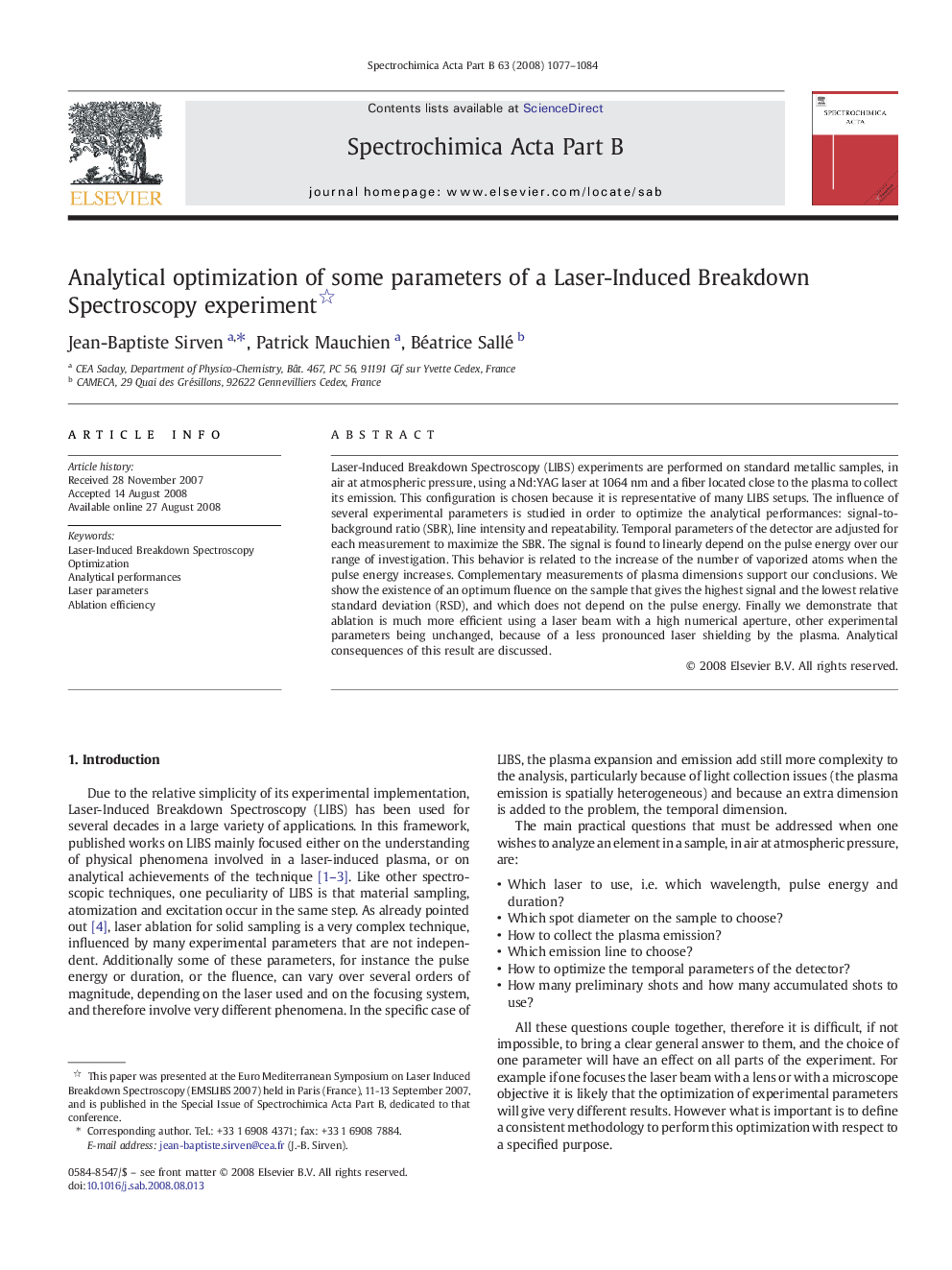| Article ID | Journal | Published Year | Pages | File Type |
|---|---|---|---|---|
| 1241244 | Spectrochimica Acta Part B: Atomic Spectroscopy | 2008 | 8 Pages |
Laser-Induced Breakdown Spectroscopy (LIBS) experiments are performed on standard metallic samples, in air at atmospheric pressure, using a Nd:YAG laser at 1064 nm and a fiber located close to the plasma to collect its emission. This configuration is chosen because it is representative of many LIBS setups. The influence of several experimental parameters is studied in order to optimize the analytical performances: signal-to-background ratio (SBR), line intensity and repeatability. Temporal parameters of the detector are adjusted for each measurement to maximize the SBR. The signal is found to linearly depend on the pulse energy over our range of investigation. This behavior is related to the increase of the number of vaporized atoms when the pulse energy increases. Complementary measurements of plasma dimensions support our conclusions. We show the existence of an optimum fluence on the sample that gives the highest signal and the lowest relative standard deviation (RSD), and which does not depend on the pulse energy. Finally we demonstrate that ablation is much more efficient using a laser beam with a high numerical aperture, other experimental parameters being unchanged, because of a less pronounced laser shielding by the plasma. Analytical consequences of this result are discussed.
